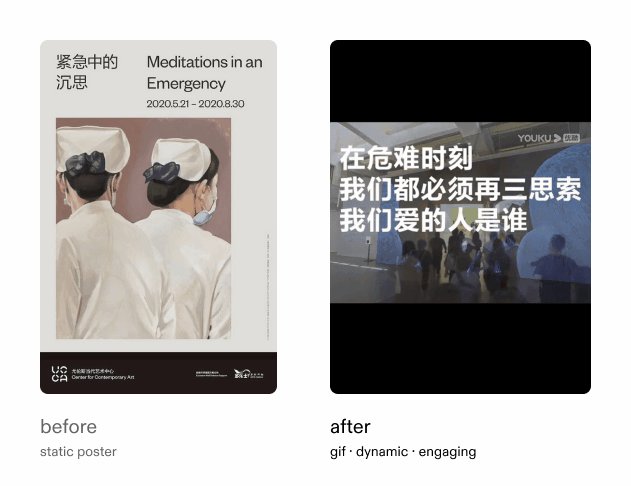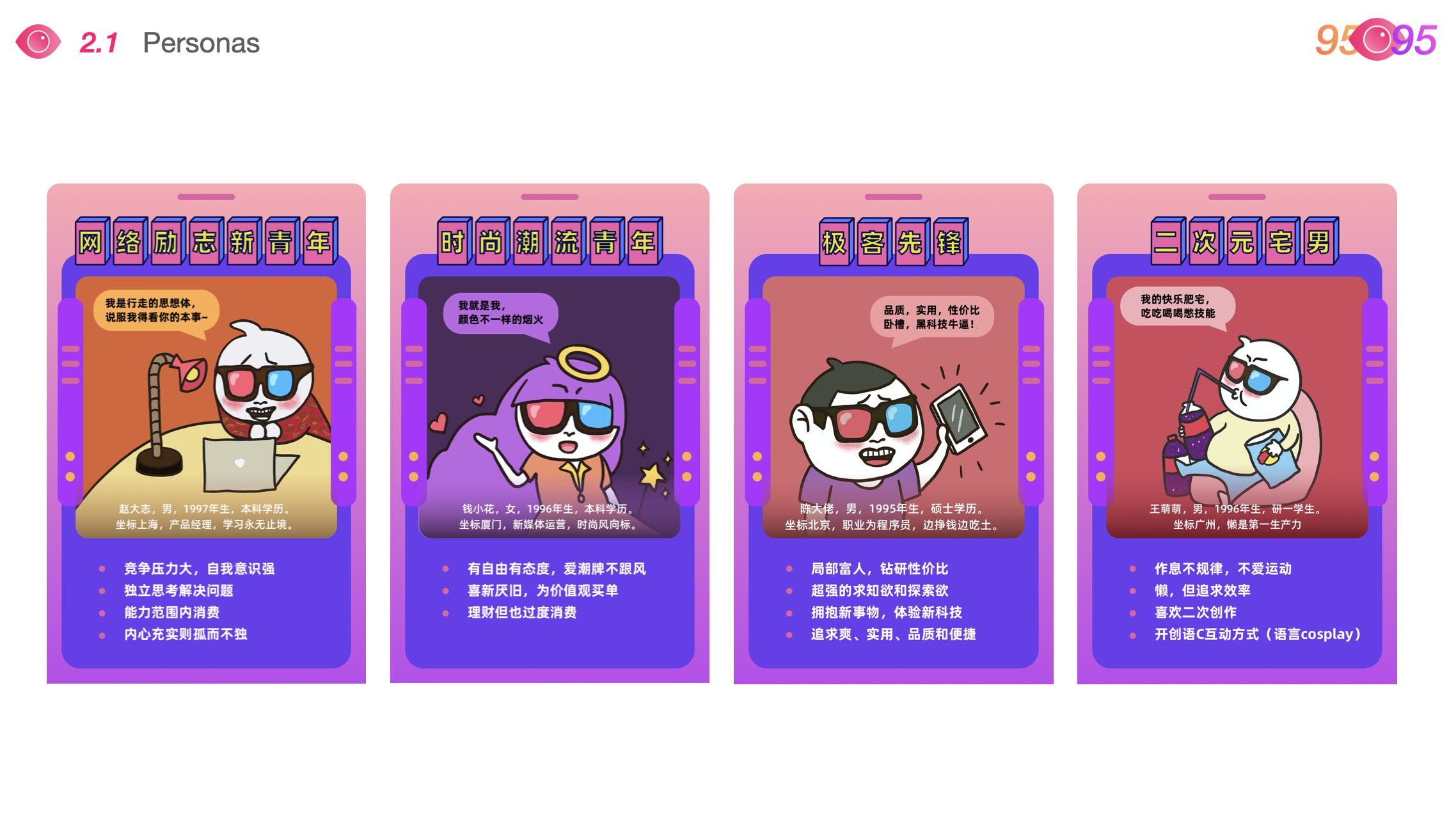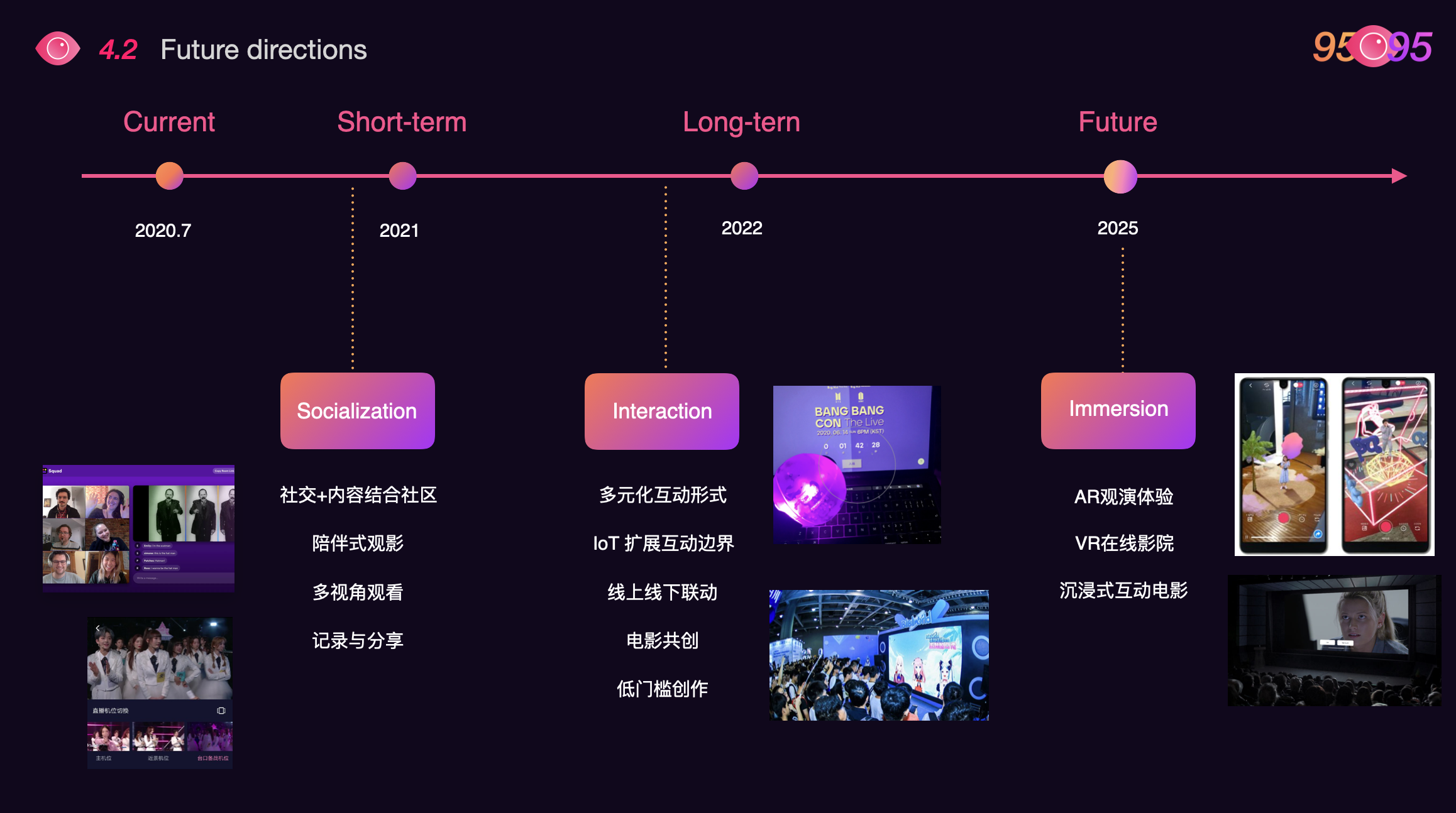Alibaba Internship
June - Oct 2020 | Beijing, China
In Summer 2020, I worked as an Experience Design Intern at Alibaba Entertainment Group, and took on various initiatives to improve the user experience of Damai, the leading entertainment ticketing platform in China.
Besides shipping new features of Damai with PMs and engineers, I also spearheaded several projects with fellow design interns to explore and navigate new design directions in the entertainment industry for generation Z users.
Besides shipping new features of Damai with PMs and engineers, I also spearheaded several projects with fellow design interns to explore and navigate new design directions in the entertainment industry for generation Z users.
Project 01
Building a more intelligent home page recommendation feed with A/B testing
Background
On a strategic level, Damai was in a transforming phase from being a pure ticketing platform to becoming a hub for all things related to local performances and events.
![]()
I joined this effort to enrich the content provided to our users. Specifically, I was responsible for exploring possible approaches to improve the design of the Damai home page recommendation feed.
How can we revise the narrative of the home page feed from selling products to showcasing highlights of performances and events?

I joined this effort to enrich the content provided to our users. Specifically, I was responsible for exploring possible approaches to improve the design of the Damai home page recommendation feed.
How can we revise the narrative of the home page feed from selling products to showcasing highlights of performances and events?
Process
I dug into the problem space by trying to identify the key factors associated with different types of performances/events that best match the expectations of their target audience. The main categories that I investigated included: exhibitions, theater dramas, and concerts.
01
I experimented with dynamic visual representation using GIF and video clips in conjunction with static posters to augment the visual representation of each event, and based on past research insights, explored the best media content for each type of event/performance that can capture our user’s attention and interest as they are browsing.
![]()
02
In addition to manipulating the visual representation, I also worked on restyling the cards to display a clearer information hierarchy with the most important factors of determination that users care about when deciding if they want to attend an event/performance.
![]()
![]()
03
I also explored the application of adaptive UI to personalize the cards for different groups of users, so that they would see a combination of selected information based on our prediction of what they cared the most, thereby maximizing the chance of matching them with the best content.
01
Static to dynamic media
I experimented with dynamic visual representation using GIF and video clips in conjunction with static posters to augment the visual representation of each event, and based on past research insights, explored the best media content for each type of event/performance that can capture our user’s attention and interest as they are browsing.

02
Identifying and reorganizing key information
In addition to manipulating the visual representation, I also worked on restyling the cards to display a clearer information hierarchy with the most important factors of determination that users care about when deciding if they want to attend an event/performance.


03
Incorporating adaptive UI to enable personalization
I also explored the application of adaptive UI to personalize the cards for different groups of users, so that they would see a combination of selected information based on our prediction of what they cared the most, thereby maximizing the chance of matching them with the best content.
Outcome
The final artifact is a comprehensive A/B testing plan that I devised to test the effectiveness of the solutions proposed above. The test is devided into two different stages - media content and information hierarchy. Each stage has sub-tests that targets one element of testing at a time.

Project 02
Improving the review-writing experience to encourage the production of high-quality reviews
Background
Just like how customers love reading reviews from others before purchasing a product, they also love to know what others think of events and performances on Damai before purchasing their ticket.
![]()
However, the overall percentage of users who actually leave a review was very low. In order to improve our current review flow, thereby supporting the content enrichment effort, the design and product team came together in hope of identifying the pain points within the original flow and optimizing it for our users.

However, the overall percentage of users who actually leave a review was very low. In order to improve our current review flow, thereby supporting the content enrichment effort, the design and product team came together in hope of identifying the pain points within the original flow and optimizing it for our users.
Solution
& Outcome
& Outcome
Our final solution was a pop-up window on the home page that will prompt the user to rate and leave a review after the performance ends. This decision was informed by an insight from user research:
“the review feature had very poor discoverability, making the effort to write such a review super high”
In the design, I strived to make sure that the interaction was light and easy, and that the user would feel inspired and enabled to create content of high quality.
![Review popup shipped in Damai App]()
![Popup window]()
![Review screen]()
![Shareable review card]()
![Flow diagram]()
Impact measurement
After the new version was released, the number of reviews written by users nearly tripled on a daily basis, validating the effectiveness of our approach and our belief that users were willing to share their opinions, as long as an accessible channel is provided.
“the review feature had very poor discoverability, making the effort to write such a review super high”
In the design, I strived to make sure that the interaction was light and easy, and that the user would feel inspired and enabled to create content of high quality.





Impact measurement
Data after launching the feature showed a positive trend - more people are writing reviews on Damai!
After the new version was released, the number of reviews written by users nearly tripled on a daily basis, validating the effectiveness of our approach and our belief that users were willing to share their opinions, as long as an accessible channel is provided.
Project 03
Research on designing for Generation Z in the entertainment industry
Background
The major user groups for a lot of our products are relatively young, most of whom are between the age of 20 to 29. As part of our internship, the three experience design interns on the design team spearheaded a user research project on Generation Z users.
Process & Outcome
Secondary research 🔍
We started off by doing secondary research in order to collect data about Gen Z users and synthesize a list of typical features shared by this group from the aspects of identity, social behaviors, entertainment preferences, and ways of self-expression. More simply, trying to get the basics — who is Gen Z? What do they like? What has past research told us about these people?
Interviews ☎️
Secondary research was followed by more qualitative research that involved direct conversations with Gen Z users. I conducted 7 semi-structured interviews with part of it being artifact analysis, asking them to share an entertainment experience that they enjoyed.
Synthesis: creating final report
Our team came together with our findings from interviews and brainstormed for ideas that have the potential to shape the future landscape of entertainment technology. To synthesize our findings into an insightful report, we considered the broad social context, individualized characteristics, as well as technical feasibility.
The insights were then organized into five different categories, which include both design suggestions on a micro-level and speculative design trends that incorporate emerging echnology such as VR theater and remote connection with IoT devices.
![]()
![]()
We started off by doing secondary research in order to collect data about Gen Z users and synthesize a list of typical features shared by this group from the aspects of identity, social behaviors, entertainment preferences, and ways of self-expression. More simply, trying to get the basics — who is Gen Z? What do they like? What has past research told us about these people?
Interviews ☎️
Secondary research was followed by more qualitative research that involved direct conversations with Gen Z users. I conducted 7 semi-structured interviews with part of it being artifact analysis, asking them to share an entertainment experience that they enjoyed.
Synthesis: creating final report
Our team came together with our findings from interviews and brainstormed for ideas that have the potential to shape the future landscape of entertainment technology. To synthesize our findings into an insightful report, we considered the broad social context, individualized characteristics, as well as technical feasibility.
The insights were then organized into five different categories, which include both design suggestions on a micro-level and speculative design trends that incorporate emerging echnology such as VR theater and remote connection with IoT devices.

